13 Great Tips To Avoid A Panic Attack While Driving in Ireland & Scotland
Last Updated: September 12, 2024
The whole driving in another country thing can set off waves of panic in some people.
As a travel advisor I always ask my clients if they want to drive and are comfortable driving in another country.
Some folks are and some are not.
Add in driving on the other side of the road — for us Americans who are used to the right side this means driving on the left side — and a full on panic attack can come on.
But I always say “Driving is driving” because it really is.
So I want to offer up some tips for driving in Ireland and Scotland.
And this advice can carry over into other parts of the United Kingdom — England, Wales, Northern Ireland.
I haven’t driven in England yet but I have driven a wee bit in Wales and Northern Ireland.
Okay.
So let’s dive into this whole driving in Ireland and Scotland mess.
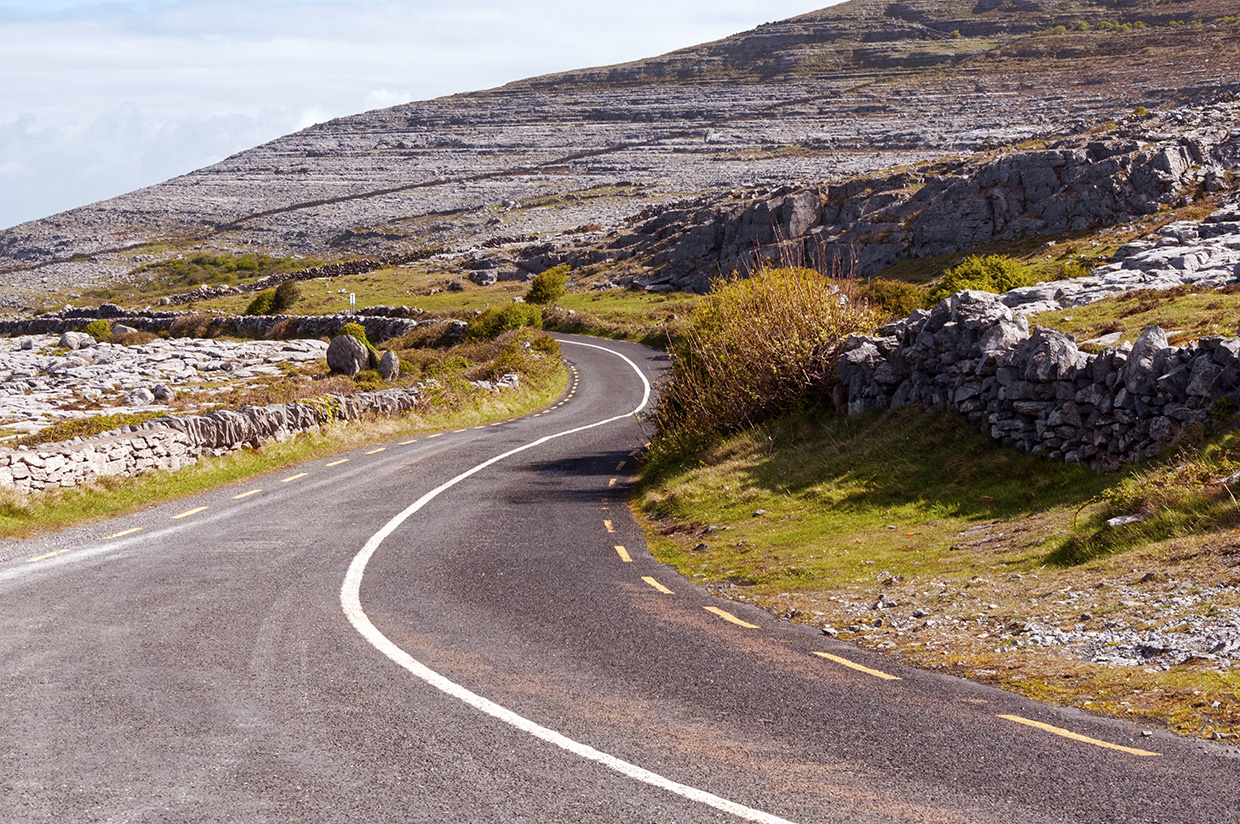
General tips on car rental
Rent the smallest car possible.
This is so difficult for Americans as we are used to our big cars and SUVs.
Renting a small car means you need to watch how much you pack if you’re traveling with other people.
I can’t stress this enough.
Most folks have fairly small cars in all of Europe.
Although I have seen more SUV-type vehicles in the past few years.
Roads tend to be smaller (we’ll get to this) and parking areas are not as large.
So rent a small car — and pack light!!!!
Notice all those exclamation points.
They are there with good reason.
Here are a couple of stories for you.
I had some clients upgrade to a larger car once in Italy, specifically Sicily.
They ended up with an SUV.
And they regretted it.
It was simply too big of a vehicle for the small town they were staying in and the little roads they were driving around.
And they felt pretty conspicuous.
I also chatted with a young American couple in Ireland in 2018.
They were upgraded to a larger car, a small SUV I think.
After driving a bit out of Dublin, they turned around and returned it, opting to go back to the small car they had originally reserved.
They were not comfortable on the wee roads in that larger vehicle.
Smart move!
Driving in Ireland and Scotland is far different so small cars are better suited for the roads.
And a small car not only means you’ll spend less on the car hire itself, but it also means you’ll get better fuel economy.
Petrol (gasoline) is more expensive in Ireland and Scotland (and all of Europe).
So your wallet will thank you for the small car too.
Check out my Tips for Renting a Car in Europe podcast episode!
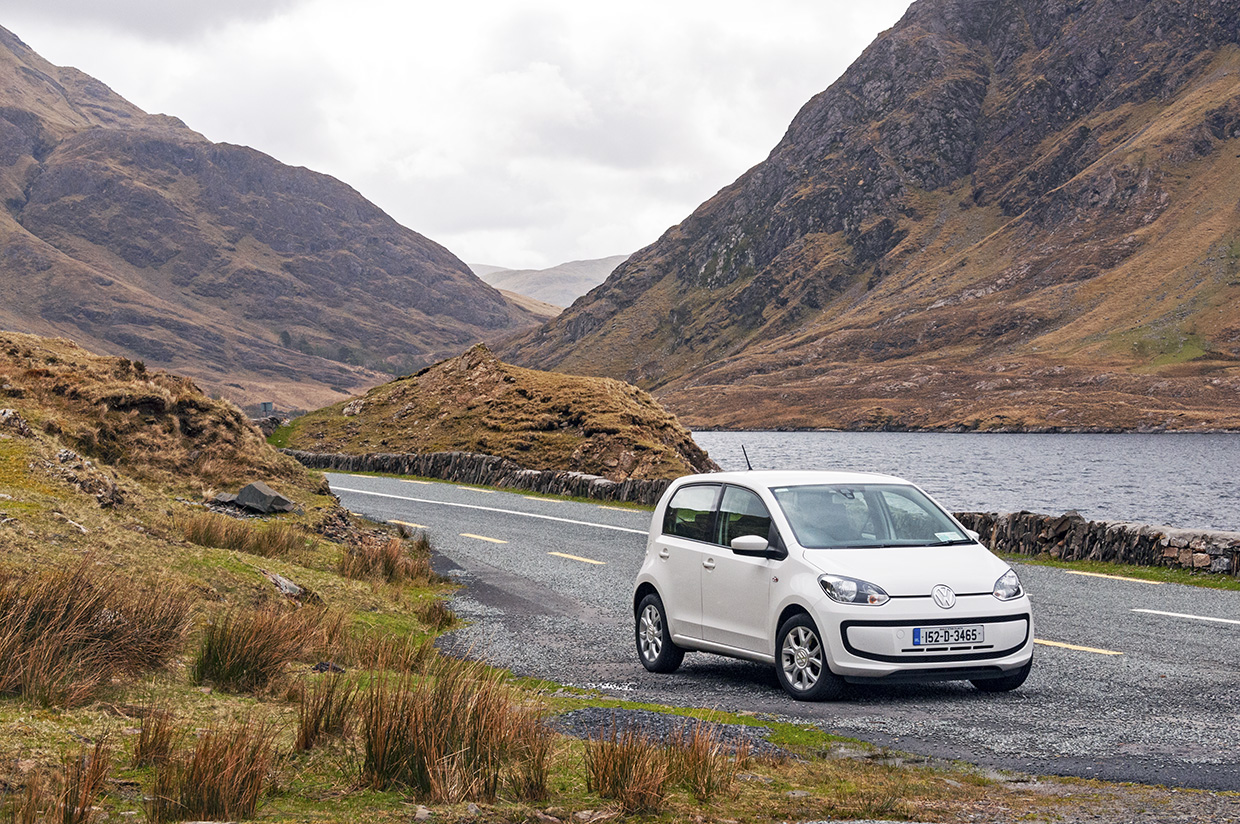
Rent a manual transmission if possible.
If you know how to drive a manual or standard transmission — a stick shift — then rent a standard versus an automatic.
First of all, this will help with that fuel economy and save you money at the gas pump.
Secondly, it is cheaper to rent a standard transmission.
Automatic transmission cars are more expensive to rent.
If you hire a car with a manual transmission, know that you will be shifting with your left hand.
The feet are the same.
I’m very right handed, but manage to do just fine.
Well, after a few times of putting the car into the wrong gear. 🤦♀️
But it’s not that difficult once you get going.
However if you are not comfortable driving a manual or don’t know how, then pay the extra for the automatic.
It will be money well spent to give you that peace of mind.
A note: Ireland is one of the more expensive places to rent a car. Why? I’m not 100% sure — although I think it has something to do with the insurance. Be prepared to pay a bit to hire a car here — both manual and automatic.
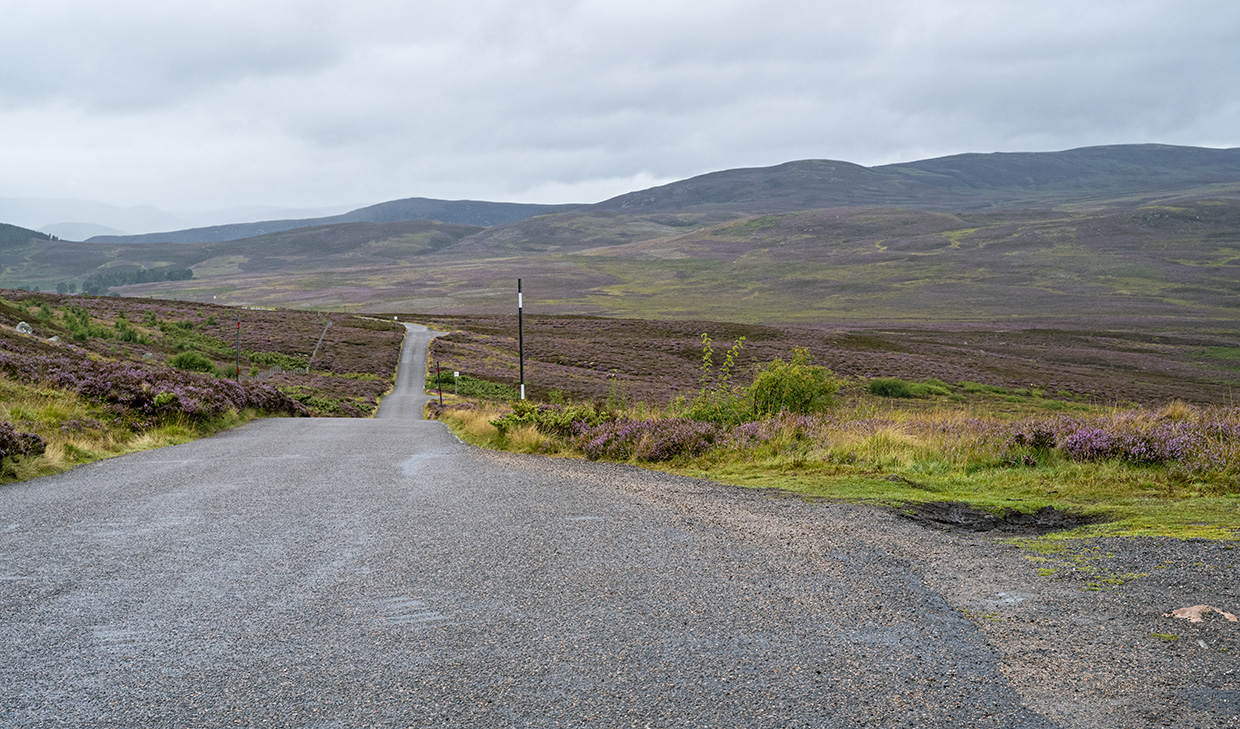
Be sure to have the rental car folks show you how to work some features on the car.
Sometimes the car rental personnel do a pretty good job of showing you the basics on how to operate the car in both Ireland and Scotland.
Italy is another story! 🙄
But if they don’t show you, then simply ask them to point out things like how to put the car in reverse (for manual transmissions), where the lights are, where the windshield wipers are and how to get the key out of the ignition — because sometimes there’s a hidden button.
Also ask where the fuel tank is and how to access it.
Sometimes there’s a key or some other trick or lever.
Ask the car rental folks if there is anything quirky about driving this particular car.
It’s their job so don’t be afraid to ask.
And if need be, sit in the parking spot for a while to find out where everything is on the car.
I have done this in Ireland, Scotland, Italy and Germany as every car is different and simply learning where everything is located is so important.
Don’t be in a rush because driving in Ireland and Scotland in a car you’re not used to can cause some anxiety.
Now, at big airports, the car rental folks are probably not going to be able to show you the various nuances of the car.
So ask a few questions like accessing the fuel tank and how to put the car in reverse if you have rented a manual transmission.
Definitely sit in it and learn where everything is so when you hit the road, you’re not looking for where the windshield wipers are.
We want you to be as comfortable as possible.
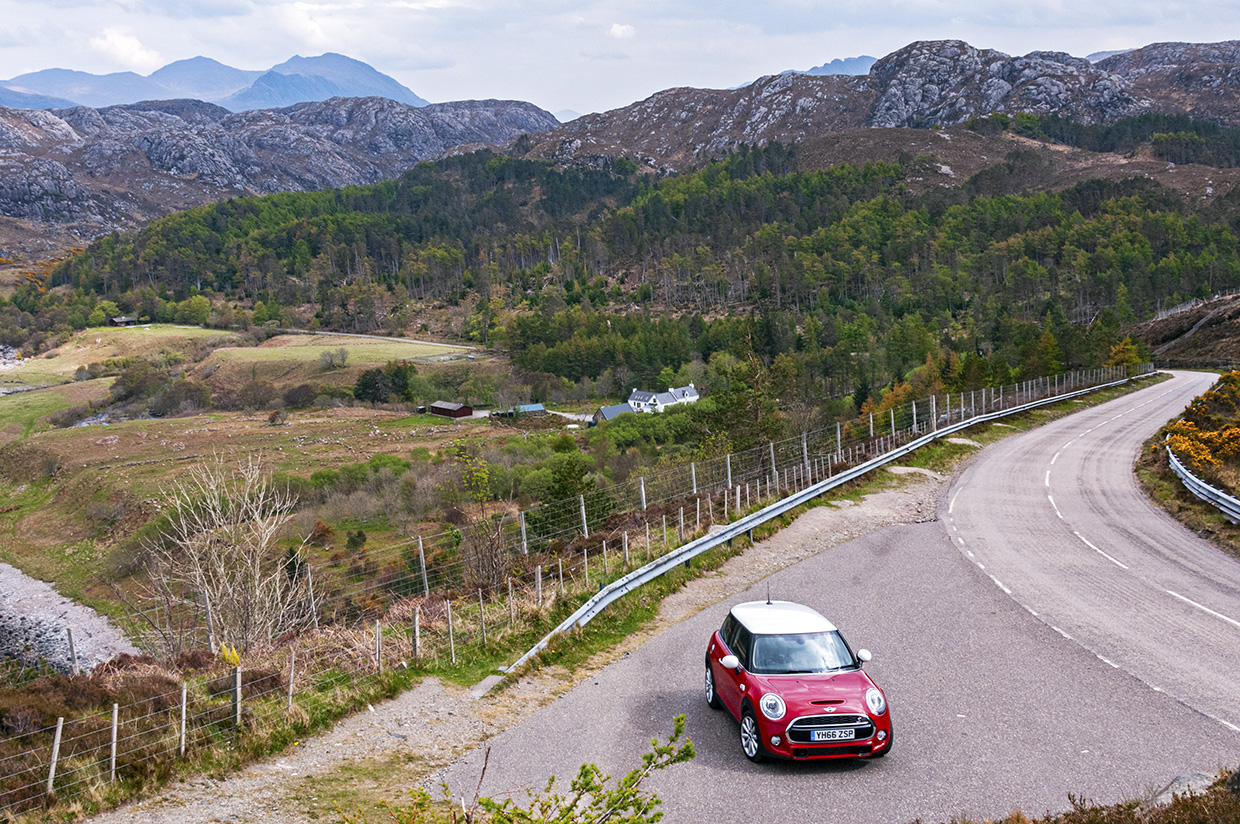
Tips on driving in Ireland and Scotland
Remember to stay left.
This is a no brainer once you get there, but it’s helpful to simply keep saying to yourself, “Left, left, left.”
The car I rented in Ireland from Enterprise in 2017 actually had a sticker in the upper right-hand corner of the windshield that said, “Stay left.”
There was even a picture.
You are sitting on the right side of the car so you, as the driver, are still on that center line.
And while it’s a bit disconcerting at first — once you are out on the road — you will get used to it.
Just watch out when you are in parking lots and other more “free style” places.
Left, left, left!
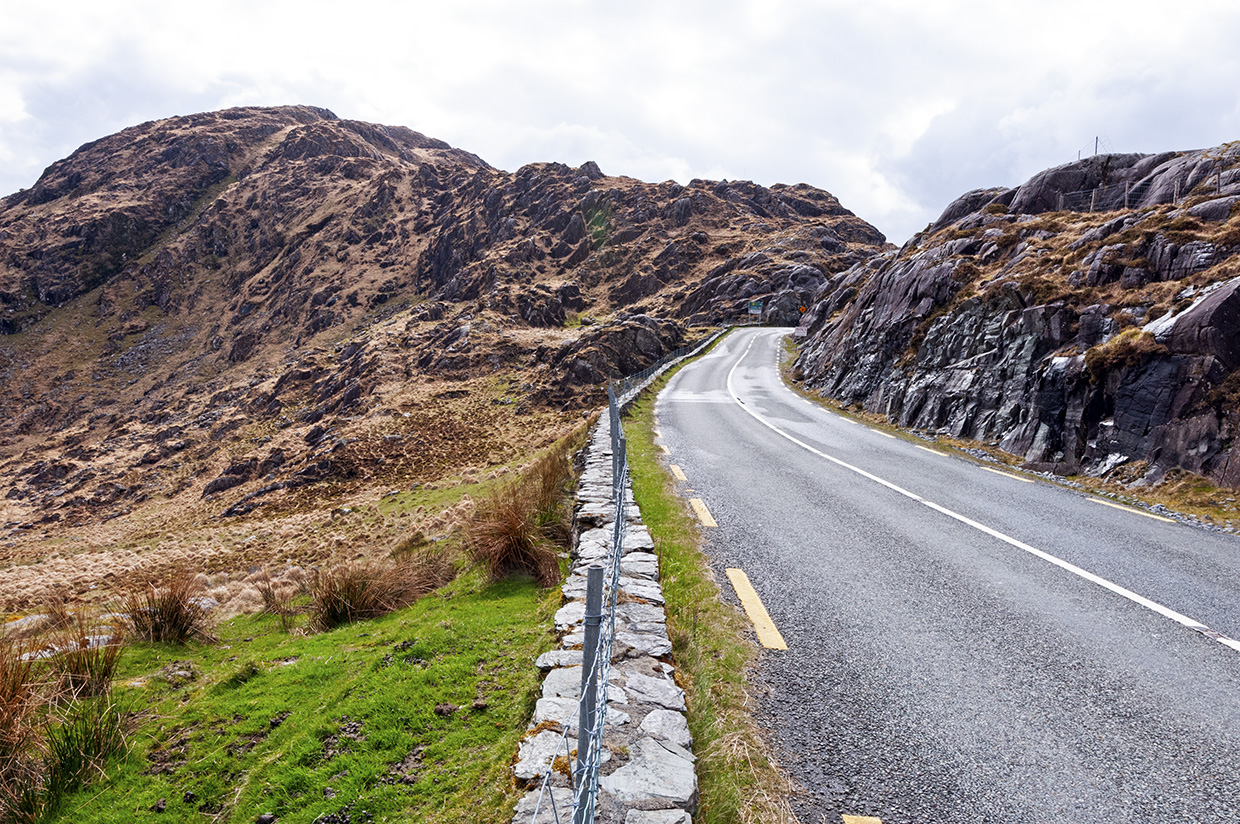
Widget not in any sidebars
Proceed with caution through roundabouts.
Some drivers are not used to roundabouts or traffic circles.
And if you’re not, then I promise you will be by the time you return from your trip driving in Ireland or the UK.
These are widely used in Ireland, Scotland and many other parts of Europe.
I personally think they are a fabulous way to keep traffic moving.
But some folks get a little anxious driving into them.
Here’s a tip: as you approach the roundabout there will most likely be a sign showing which way you’ll need to go.
Know where you are headed (see below) so you know which exit to take.
And if you are using a GPS it will say something like, “At the roundabout take the second exit for Galway.”
So as you enter that roundabout think about exit numbers and not going left or straight or right.
Think in terms of exits and which number it is.
Sometimes the first exit will be left and sometimes it will be straight.
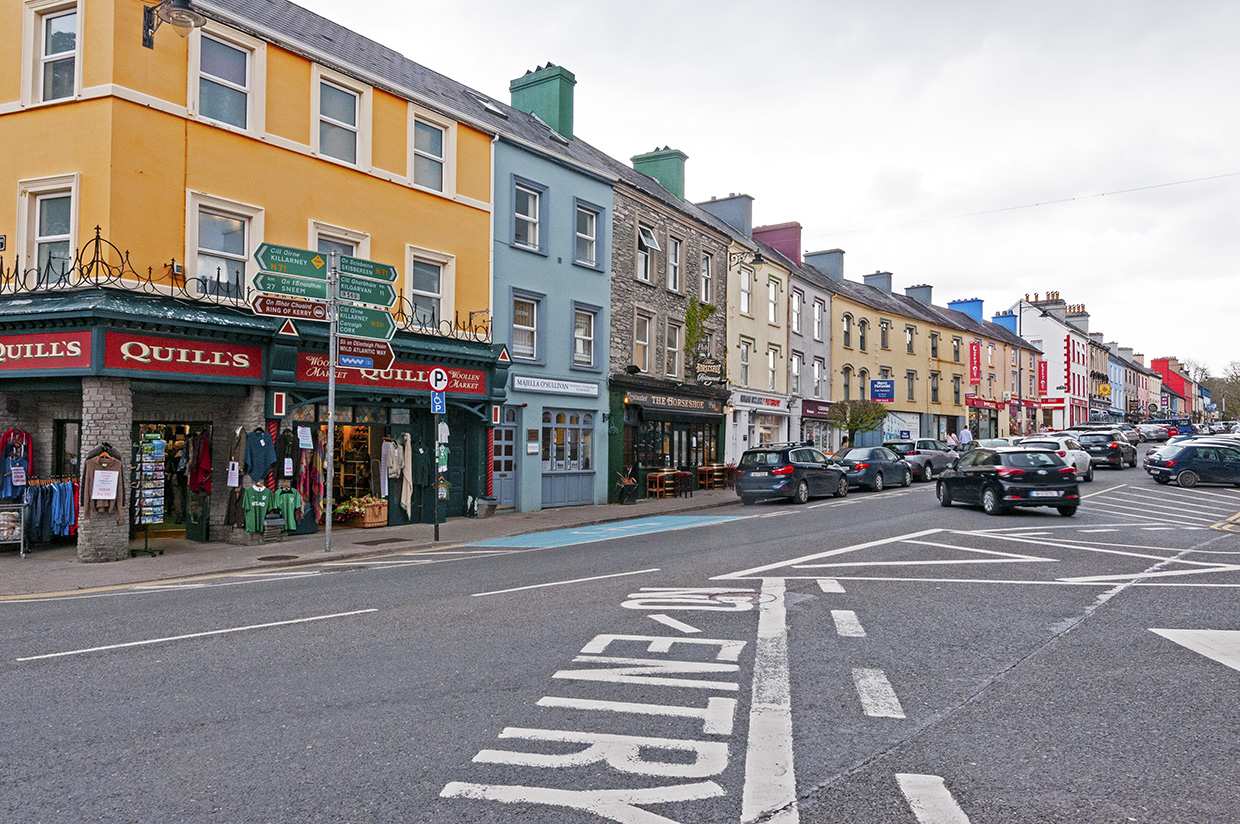
Know where you are going and use Google Maps, Maps or WAZE.
Duh!
Let me explain because driving in Ireland, Scotland and other parts of the UK are a bit different when it comes to directions.
So…
You might be driving from Doolin near the Cliffs of Moher to Dingle Town on the Dingle Peninsula.
But there might be a few ways to get there.
When you plug your destination into the map app on your phone, take note of the choices.
Look at them closely to see what the route looks like.
And choose the one that is best.
This does not mean quickest or shortest.
Often routes are on wee roads or go over mountain passes.
Take the scenic route when possible — when you have the time and the weather is decent.
Also note which towns you may pass through or by.
I recommend knowing the route numbers you want to be driving on and look for those as you are driving — especially as you come to those traffic circles.
Often you’ll see signs for those towns and the route numbers.
This gives you peace of mind to know that you are going the proper direction.
They tend to NOT use directions on signs — no North, South, East or West.
But rather you may see signs for the major cities such as Edinburgh or Glasgow or Inverness.
Know which direction you want to head toward and which ones you do not.
More than likely, you’ll find your way.
And if you can’t, then stop and ask a local.
The Irish and the Scots are some of the nicest people on the planet!
PS Do NOT believe the time that your map all tells you as you are often driving slower than the posted speed so it will take you longer. Always add at least 50% more. In some cases, I’ve had it take me twice as long!
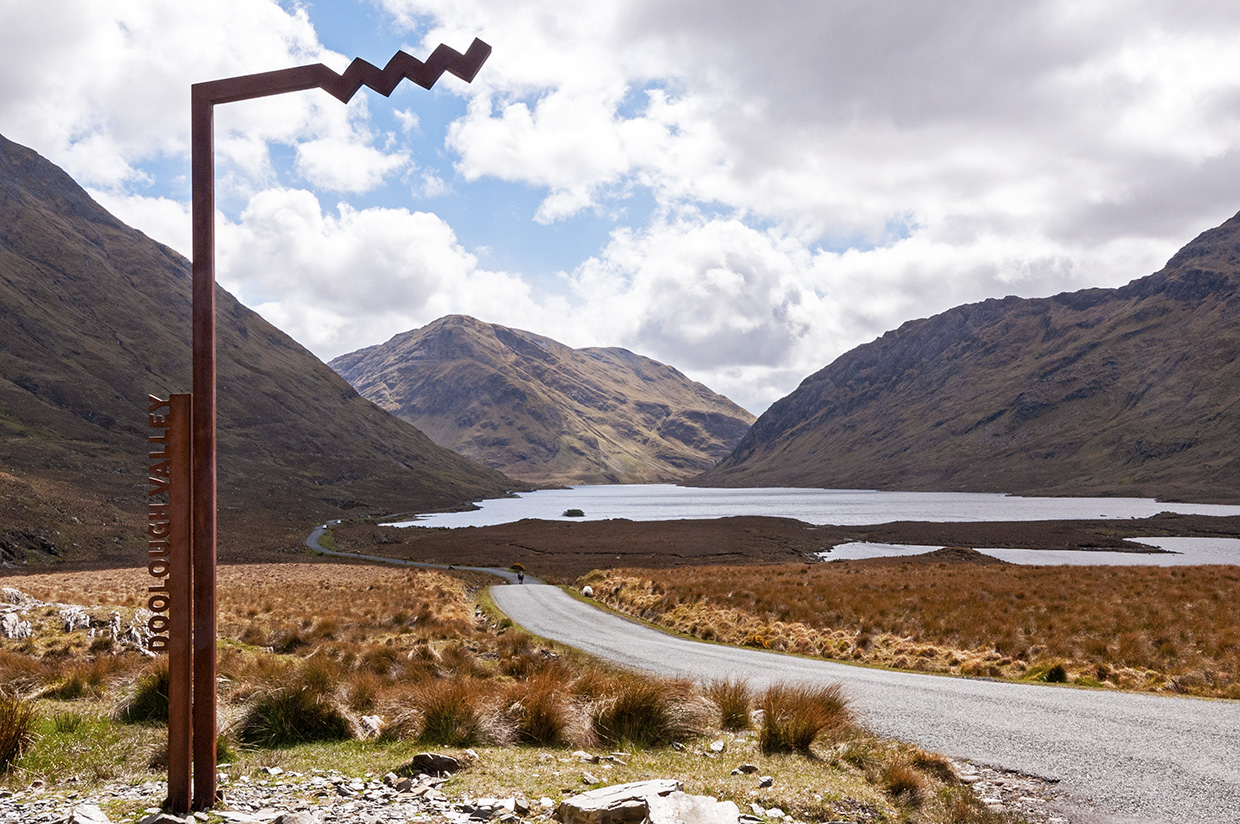
Know the rules of the road in that country.
Are you allowed to talk on your cell phone as you drive?
What are some of the basic speed limits?
There are sections in some guidebooks for this — for instance the Lonely Planet guide to Ireland has a page or 2 in the back of the book on driving in Ireland.
You’ll also find information online.
Or you can check with your personal travel planner.
She’s always ready to help! 😉
But I’ll answer that first question.
You are NOT allowed to use your mobile phone while driving in Ireland or the UK unless you use it hands free, so with a blue tooth type device.
Ireland is particularly strict with texting and driving.
These are some of the rules you want to be aware of as you drive in Ireland and Scotland.
Also you do NOT need an international driver’s permit for Ireland or Scotland (all of the UK, actually).
Your US and Canadian driver’s license will do the trick.
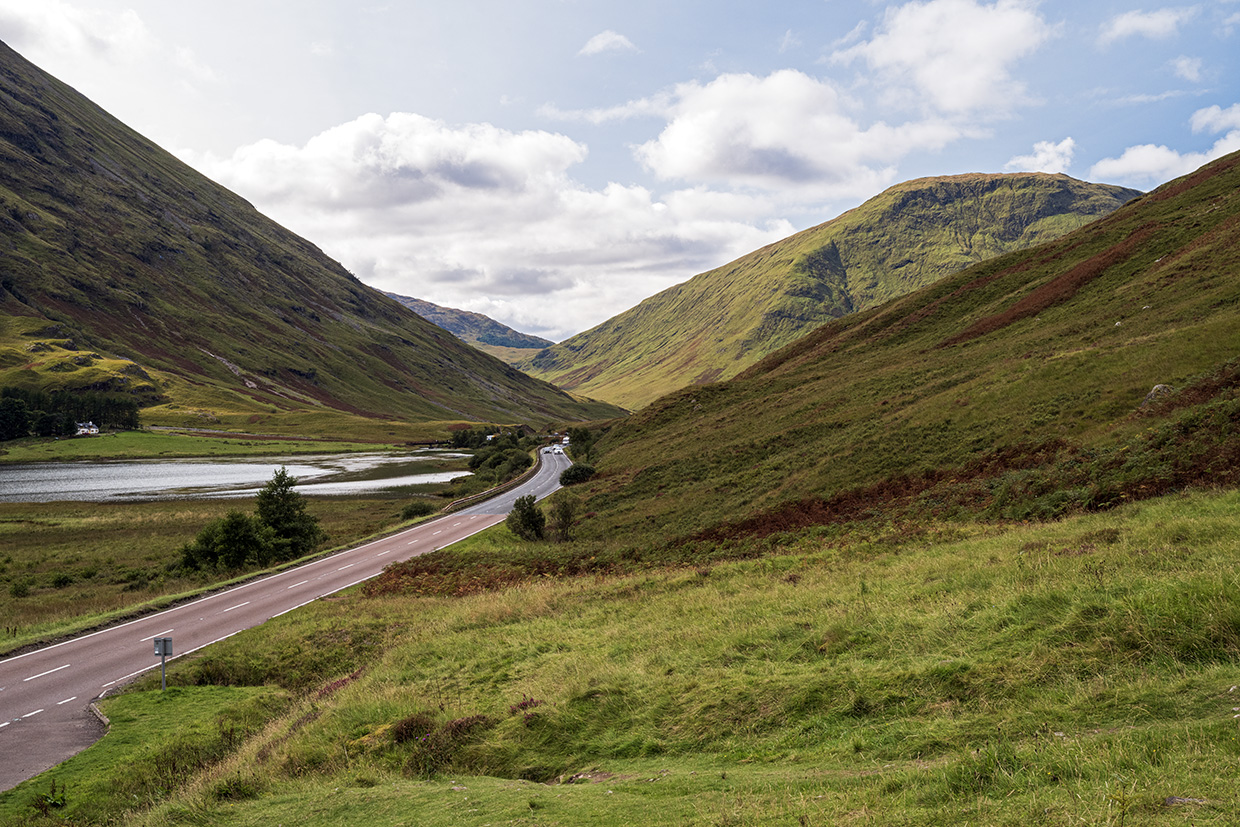
Avoid driving in the bigger cities.
Pretend that’s in all caps and extra bold.
And has an exclamation point at the end.
The cities are difficult to drive in with so many one way streets, pedestrians, bicycles and lights.
It can be a nightmare.
And it can set off a full blown panic attack.
We don’t want this.
So I highly recommend(!!!!) NOT driving in the cities.
You don’t need a car in cities like Dublin or Cork or Edinburgh or Glasgow.
You’ll be able to walk, use the public transportation or ride in a taxi or ride a bike if you want.
If you have to drive through a city, try to drive around it.
Typically there will be an outer belt that goes around the city.
Dublin has the M50.
Now you may need to drive a bit in the city when you first pick up your car or when you drop it off.
My advice is to rent from an office that is as far to the outskirts of a city as possible such as the airport.
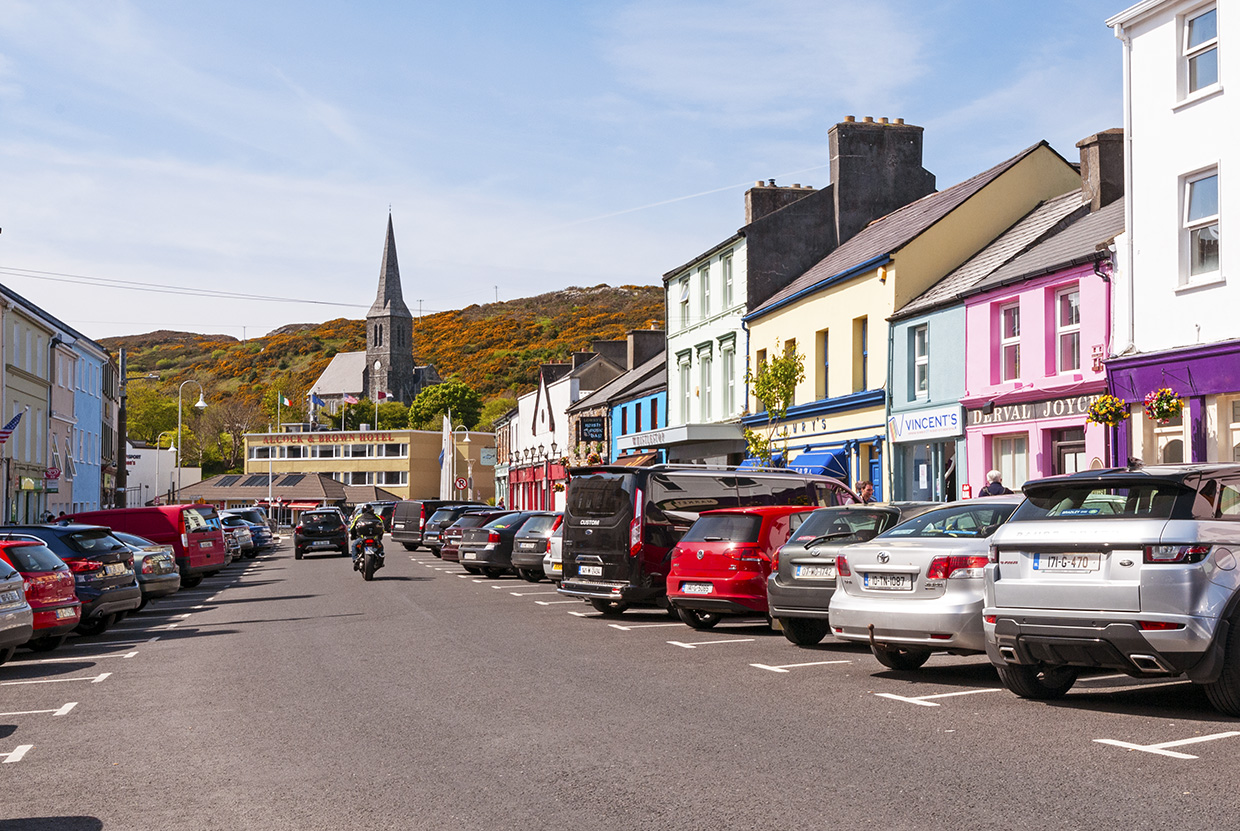
Take the scenic route.
Yes there are highways — called motorways — in Ireland and Scotland and all through Europe.
And they are great for quick trips when you really need to get from point A to point B quickly.
But the best part of driving in Ireland and Scotland — or so many other European countries — is to take in the stunning scenery and to drive through the small villages.
So take the scenic road.
Yes it may take longer so you’ll want to plan for that.
But it’s so worth it.
This is where you’ll have experiences that you’ll remember the rest of your life.
However this also means you might be on more rural or lesser roads — which leads me to the next tip…
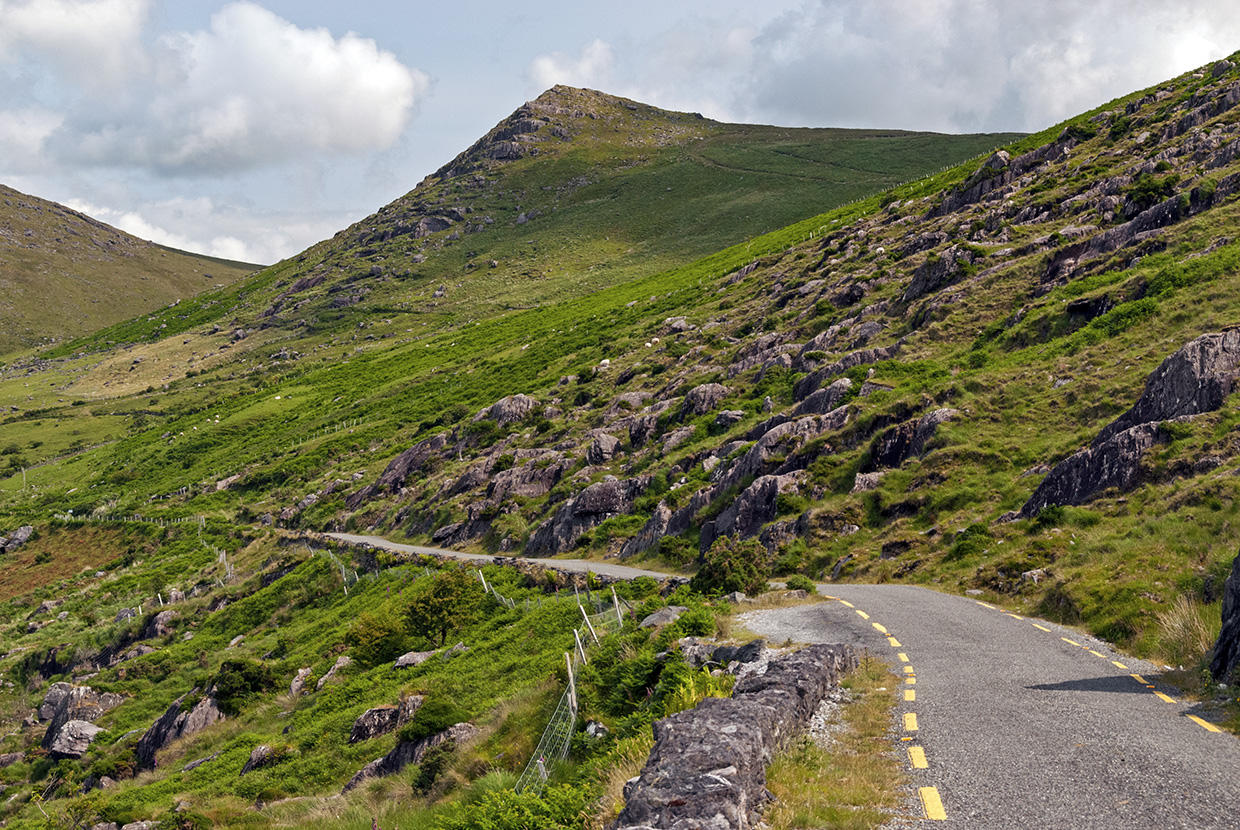
Be prepared to drive on wee roads.
If you have any sense of adventure — and I hope you do if you are reading this blog — then you are going to be driving on wee roads.
Don’t be afraid.
Take your time.
You may end up on some single track lanes which are literally the width of one car but where you’ll find pull outs or passing areas.
You’ll see the signs for these pull outs.
The best advice for driving these wee roads is to slow down and to pay attention.
You need to notice if someone is coming at you from the other direction and if there is a place for either you or them to pull off so the other can drive by.
Notice if that person has pulled off already.
If so then they are letting you pass because there is a passing place up ahead.
Yay!
It’s very important to simply be hyper observant on these little roads as you’re driving in Ireland & Scotland.
I have driven lots of these in Scotland — in the Northwest (part of the North Coast 500), on Isle of Skye, on the Isle of Mull and in other rural spots in both the Highlands and the Lowlands.
And while I was a bit nervous at first, I quickly got the hang of it.
But I didn’t drive these at night and I did my best to take my time and be hyper aware of the other cars.
And yes, take in the gorgeous scenery!
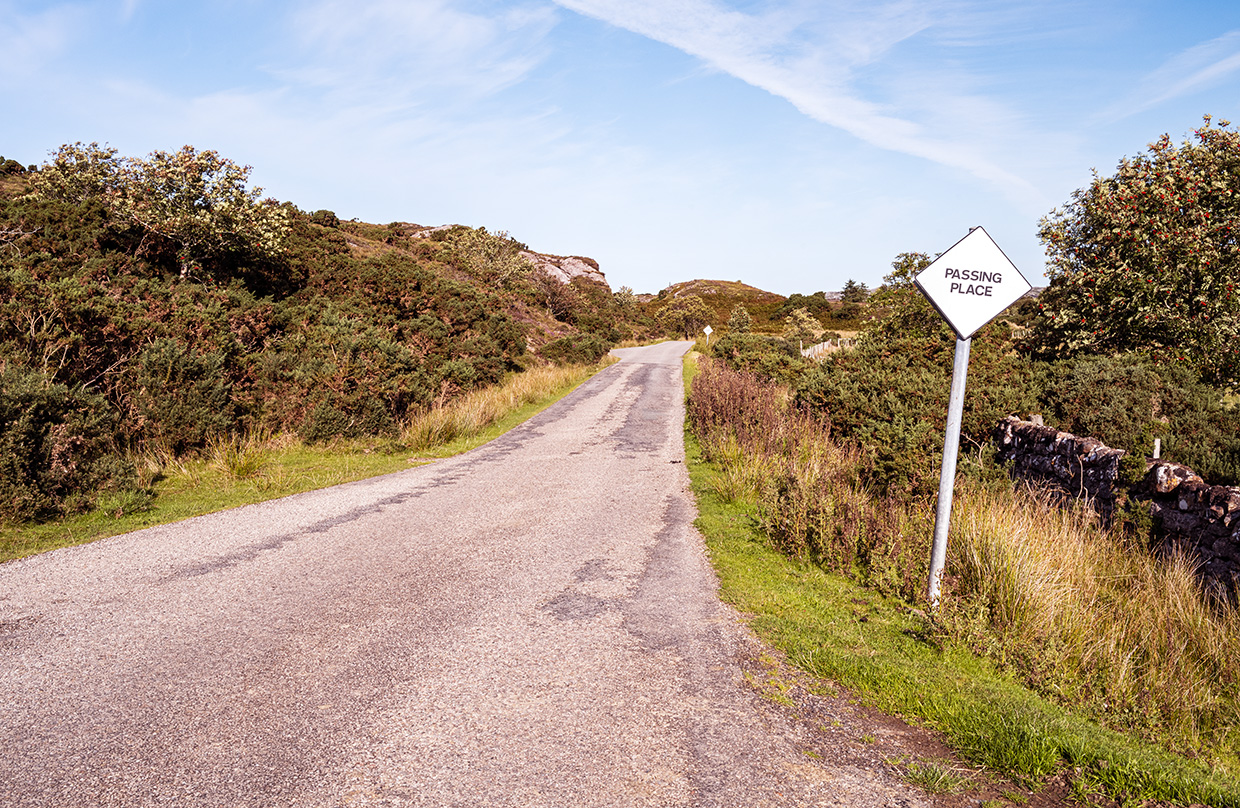
Watch out for sheep, cows or goats on the road.
This comes with driving on wee roads that are often out in rural areas where there are farms.
You may actually be driving through grazing land.
Look for the signs.
So please pay attention!!!
If there are sheep or cows on the road, just honk a few times and slowly try to move them off the road.
They’ll typically scatter to the sides so you can get through.
But sometimes they take their sweet time.
So be patient.
You may also come up someone riding a horse along the road.
Again be patient and be considerate.
They will most likely move over to the side.
But you may have to pass so be careful and give the horse and rider plenty of room.
And you will most definitely come up on some sort of farm machinery — such as a tractor — on the the road.
It will be moving slower than a car so slow down and wait until it is allowed and it is safe to pass.
Driving in this type of environment can be very different from what you are used to so take your time and be respectful.
Patience is extremely important when driving in Ireland and Scotland.
Remember — this is all part of the experience.
So revel in it!
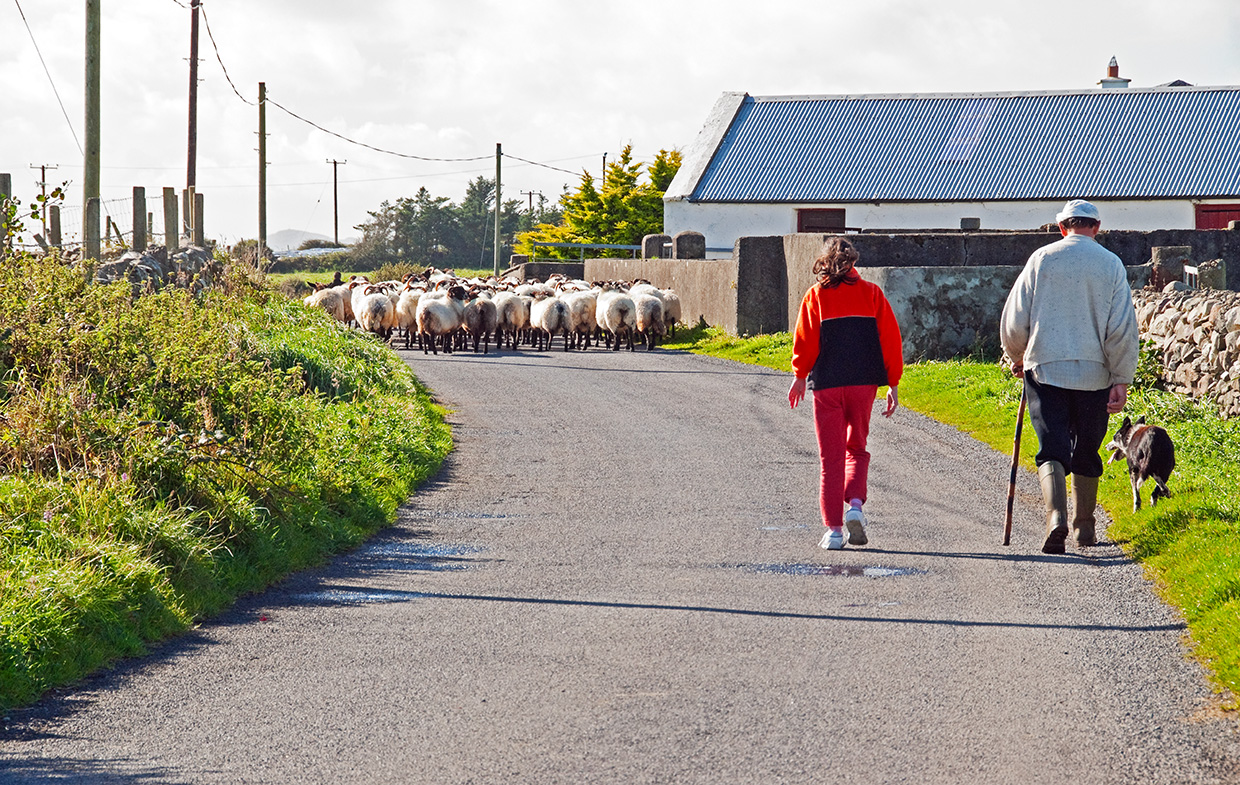
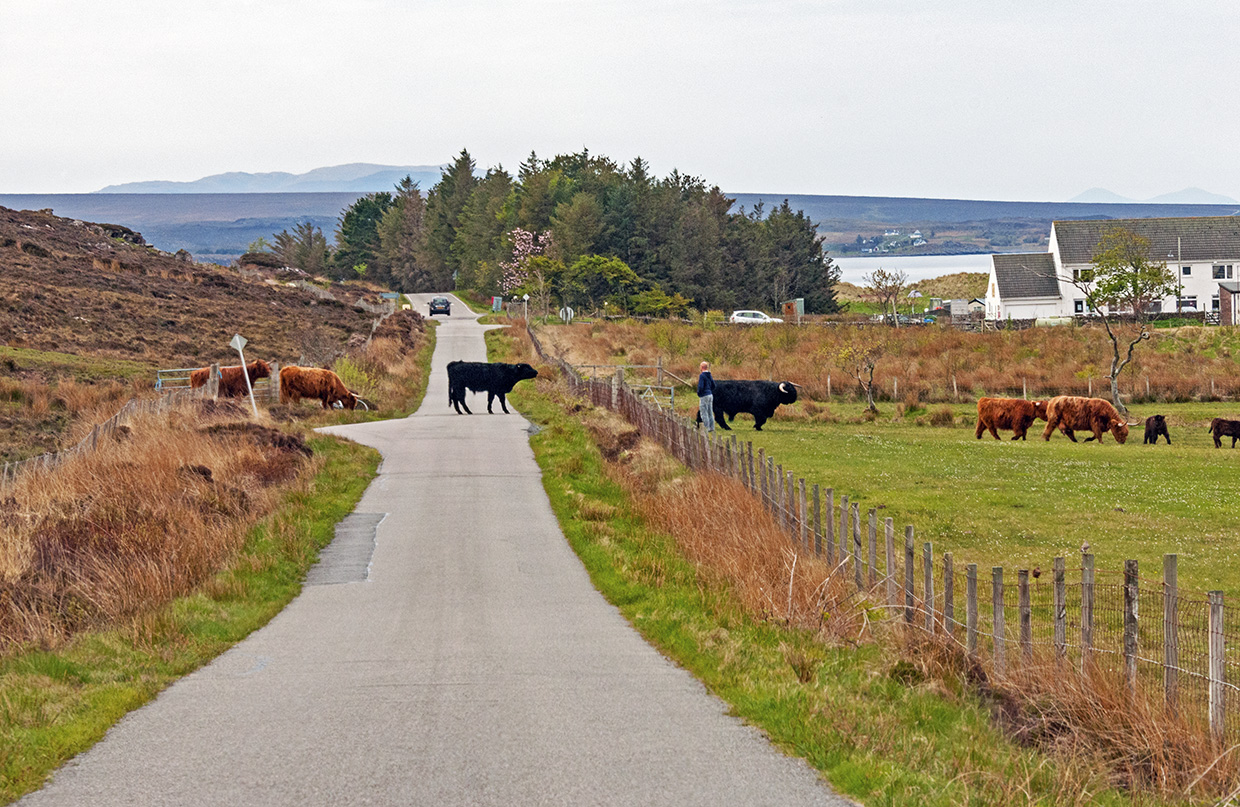
Try not to drive at night.
I do think it’s best not to drive at night if you can avoid it.
The wee rural roads are twisty and typically not well lit — at all.
So please do not drive at night.
If you do, keep your trips short.
If you are staying outside of town and need to get into town for dinner, see if there is a taxi service.
And if you decide to drive, then just be sure to take your time.
It will be helpful if you’ve driven that stretch of road a couple of times.
But don’t make long trips on these wee roads at night.
It won’t be fun.
And you won’t see a damn thing!
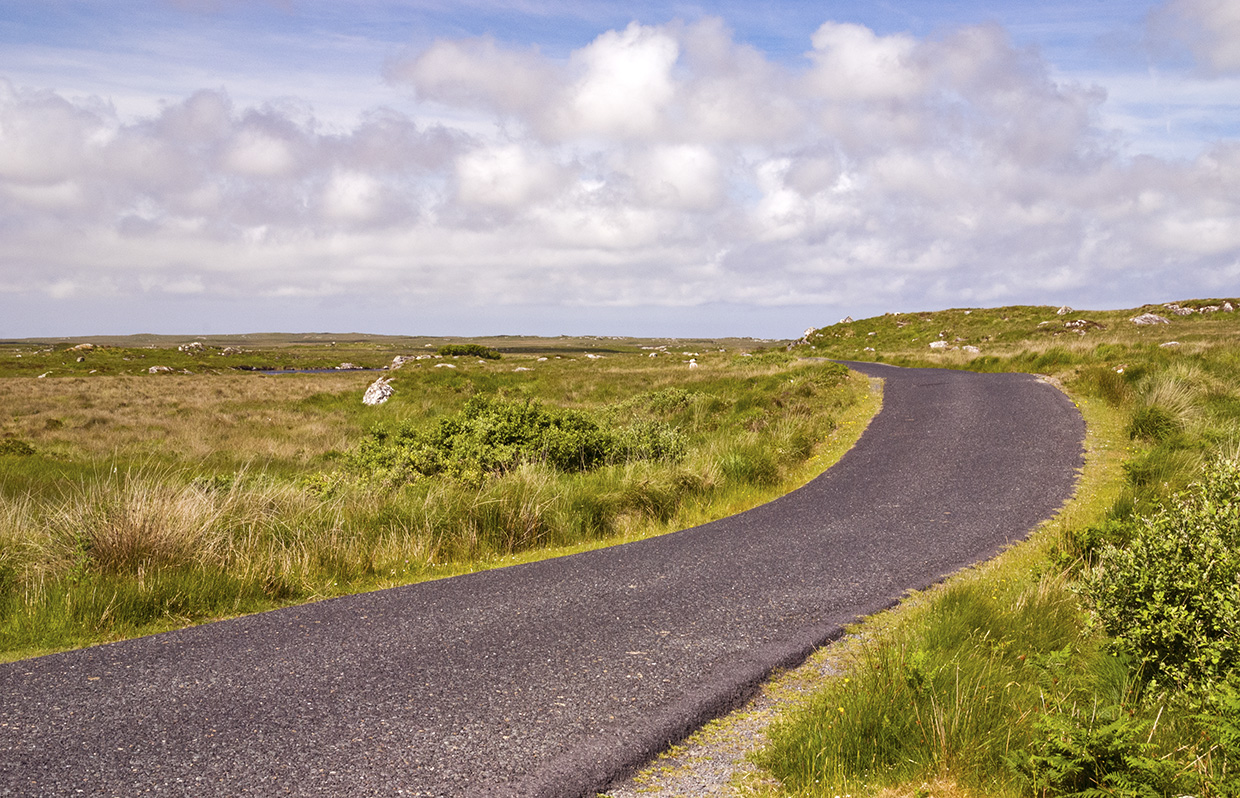
Take your time and enjoy yourself.
Don’t try to cover a lot of ground as you’re driving in Ireland & Scotland.
Driving these wee roads can be tiring so try to keep the trips shorter than you would in the US or in Canada.
Take your time and make stops along the way.
Don’t try to drive the speed limit if you’re not comfortable.
It’s okay to drive slower.
The best advice I got on driving in Ireland came from a B&B owner named Margaret.
She asked me how I was “getting on” driving in her beautiful country.
I was honest and said I felt like I was so slow and slowing the locals down.
She told me, “Drive at a speed you’re comfortable with. If the person behind you wants to pass, then they’ll pass you.”
And I’ve adhered to that advice whenever I’ve driven in Ireland and have carried that advice to all other places I’ve driven in Europe.
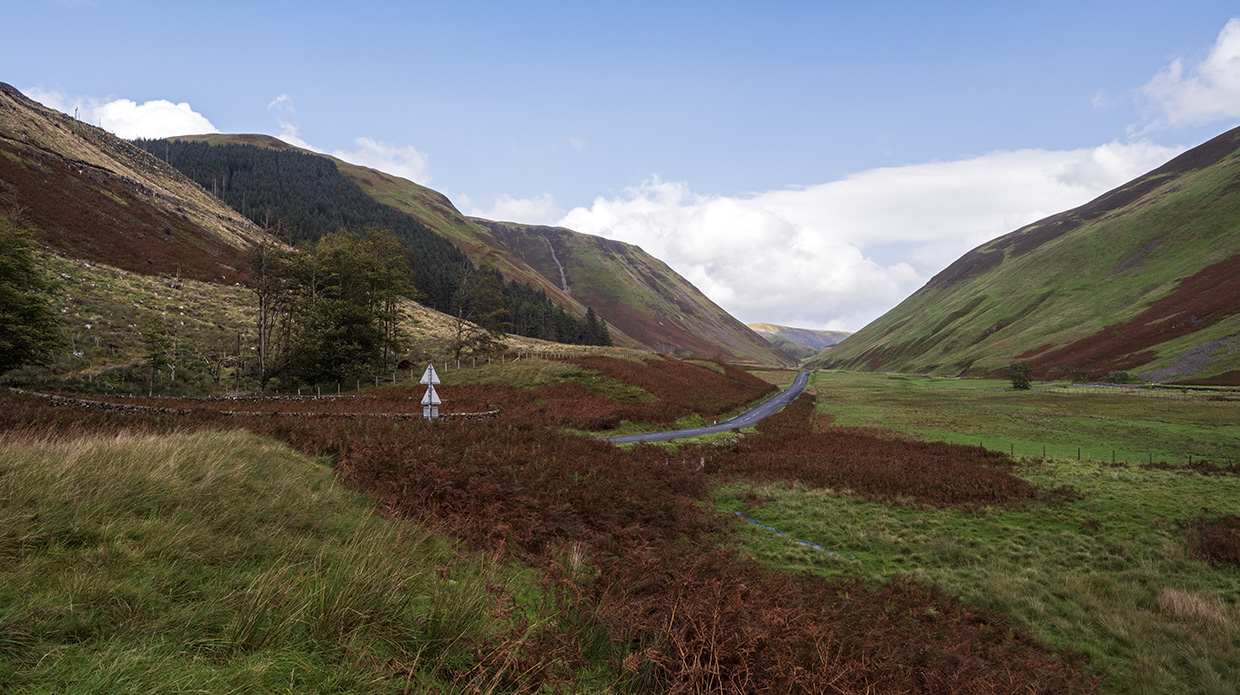
Driving in Ireland and Scotland is such a wonderful way to see these 2 beautiful countries at your pace.
So don’t be afraid to get behind the wheel and drive on the other side of the road.
Slow down and smell the heather, the peaty bogland and the salty sea air.
Don’t try to drive long distances in one day.
Take the scenic route.
Relish the unique experiences.
Pack your patience — and a small suitcase.
And take lots of photos.
I promise — you won’t regret it.
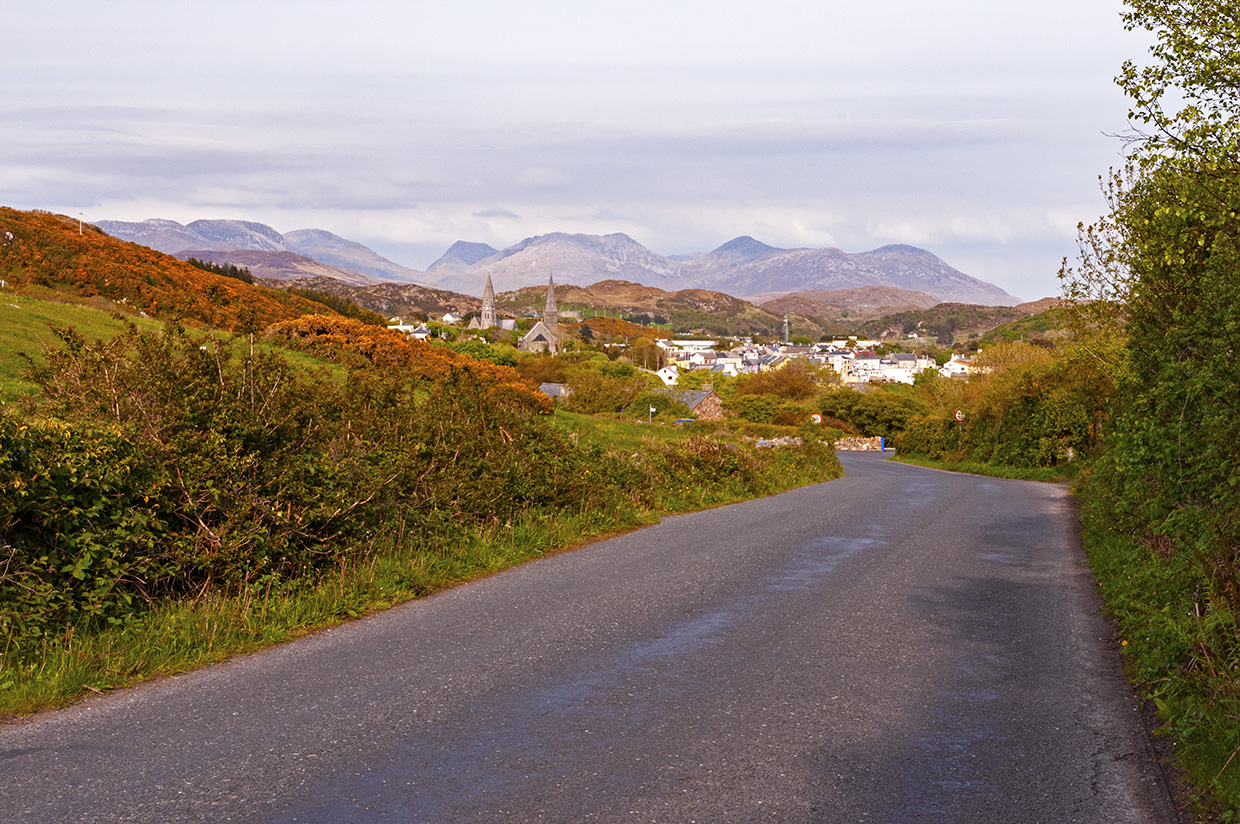
Disclaimer: This post contains affiliate links. This means I will earn a commission – at no extra cost to you — if you click on the link and purchase anything from these trusted companies. It helps Wander Your Way, a small business, stay in business. Thanks for your support!
Like it? Pin it!
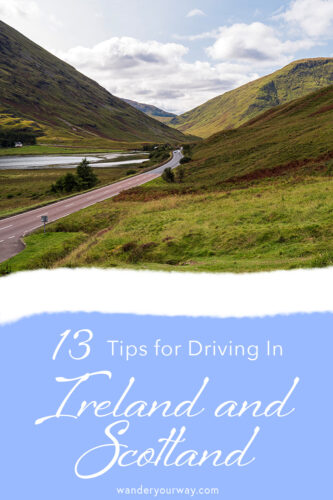
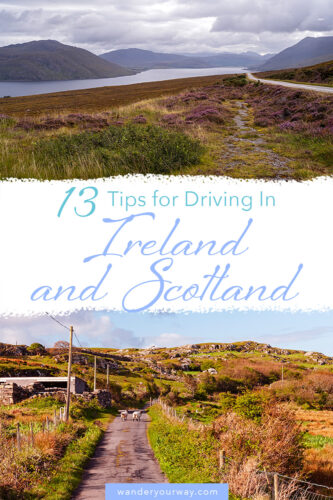
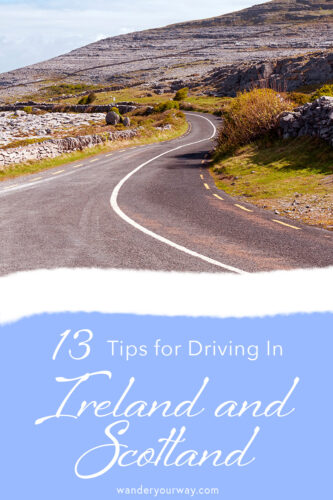









Exceptional tips, Lynne! Ireland is an indeed awesome travel destination for a road trip. Anyone planning to rent a car and drive in Ireland should read your detailed post. Keep up the great job! 😉
Thanks for the comment Agness. I love driving in Ireland and am learning to love it in Scotland too!
I super love roadtrips! wonderful list of tips and guides, indeed it’s very helpful to us those who love to travel via raodtrips. Would love to visit Ireland soon!
Thanks for the comment Lexie. I love roadtrips too. And Ireland is a perfect country for roadtrips!
Completely agree. I live in England so take most of this for granted but we recently drove to Belgium and driving on the other side of the road and going around the roundabouts the “wrong” way was a super bizarre experience!
It’s definitely different at first to drive on the “other” side of the road. But after a day or 2 I think you get used to it. Thanks for the comment, Amy!
I just loved reading this post! It brought back so many memories of driving in Scotland, Northern Ireland, and New Zealand! And by that I mean memories of me being in the passenger seat while my husband expertly drove in those countries. You give the most perfect advice for how to drive safely and enjoyably on the “wrong” side of the road. And your pictures are absolutely stunning – especially of the “wee roads.”
Thanks so much for the comments, Sarah. The “wee” roads are really the best, aren’t they?!
So many people forget to take in “photo time” and there is certainly plenty of opportunities for that in Scotland and Ireland! I always forget how much of a change our little roads in Scotland are for some drivers. Excellent tips!
Photo time is so important, Kristin. And yes, your wee Scottish roads can lead to hyperventilating for some folks. But I think driving (along with walking) is the best way to see your country which is stunning!!
Great post! Love all the images!
Carmelatte
Thanks for the comment!
Too late ! I already panicked there. LOL.. The roads were so small combined with rain and left side….too much for me. Agree on the small car thing! So important!
I”m sure you’re not the first Cherene! But next time you’ll do better. There have been a couple of times where the rain was coming down so hard that I pulled off.
Been there done that lol, but I have found that its much easier to drive here than in a big US or Canadian city. Toronto and Vancouver are way harder to drive in than Ireland (Dublin or Belfast) because these cities are so small compared to NA. The problem I find is that you just want to stare in awe at the scenery and not concentrate on the damn car. LOL
LOL Faith! I agree that the beauty of Ireland and Scotland are quite distracting! Thanks for the comment.